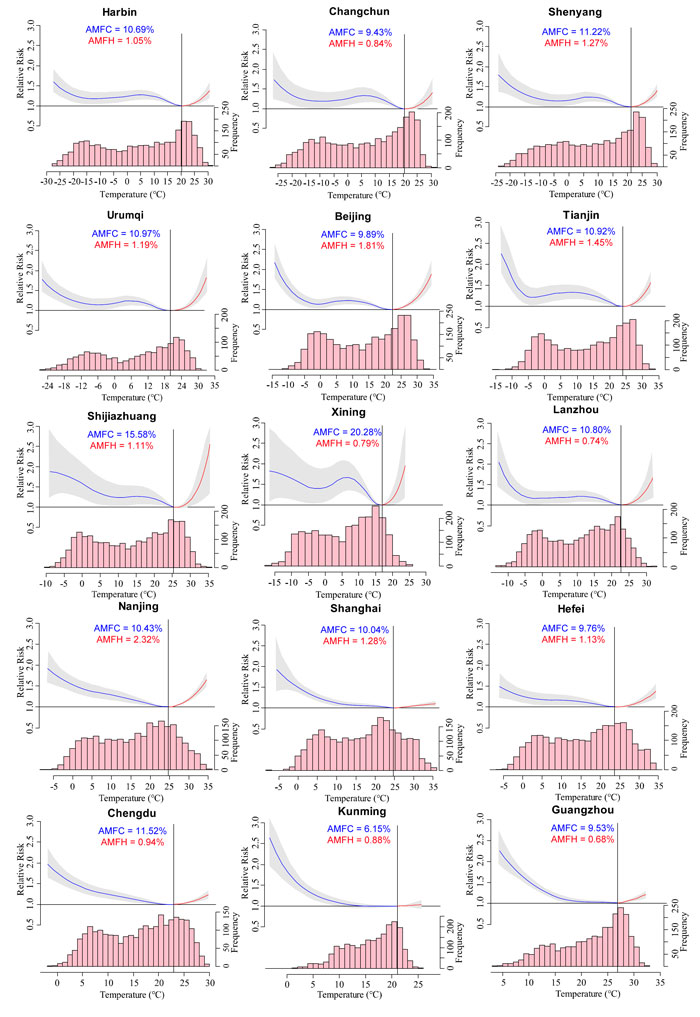| Tweet | Follow @co2science |
Paper Reviewed
Zhang, Y., Wang, S., Zhang, X., Hu, Q. and Zheng, C. 2020. Association between moderately cold temperature and mortality in China. Environmental Science and Pollution Research doi.org/10.1007/s11356-020-08960-5.
Climate alarmists predict global warming will increase human death rates, and nary a heat wave occurs but what they are quick to blame any concurrent excess deaths on the high temperatures associated with it.
Much more deadly than hot weather, however, is cold weather; yet climate alarmists typically ignore the excess deaths that are caused by low temperatures, even though they are far more numerous than those caused by high temperatures. Indeed, numerous studies detailing this fact -- that extreme cold kills far more persons than extreme heat -- can be found by perusing the many reviews of the topic we have posted in our Subject Index under the subheadings of Health Effects of Temperature: Hot vs Cold Weather. The present review details the latest work to confirm this fact, as reported by Zhang et al. (2020) for 15 Chinese cities using data from 2010-2016.
To conduct their analysis the five Chinese researchers utilized daily mortality and meteorological data from the capital cities of 12 provinces (Harbin, Changchun, Shenyang, Urumqi, Shijiazhuang, Xining, Lanzhou, Nanjing, Hefei, Chengdu, Kunming, and Guangzhou) and three municipalities (Beijing, Tianjin, and Shanghai). The fifteen locations were well-distributed latitudinally from 23 to 46°N. Location-specific temperature-related mortality risk was estimated with a quasi-Poisson regression combined with a distributed lag nonlinear model across a lag of 0-21 days. Thereafter, data were pooled in a multivariate meta-analysis to derive a grand mean in the temperature/mortality relationship for all cities.
The results are presented in Figure 1 below, depicting the overall cumulative exposure-response curves for the 15 locations along with their corresponding minimum mortality temperatures (MMT) and histograms of the frequency distribution of average daily temperatures. In addition, the calculated attributable mortality fraction due to non-optimum temperatures (both hot and cold) are presented for each city.
The MMT varied in each of the cities from the 71st to 93rd percentiles of temperatures, with an average 78th percentile for the multi-city mean. Because the MMT is higher than the 50th temperature percentile, these data suggest human adaptation and preference for temperatures on the warm side of the observed temperature spectrum. More importantly, however, are the calculations of attributable mortality fractions (AMF). Here, Zhang et al. report that "over all the cities, the total attributable fraction of mortality caused by non-optimum temperature, including both cold and heat, was 12.65%," varying from 7.03% in Kunming to 21.07% in Xining. But, the vast majority of those deaths (approximately 90%) were attributed to cold weather (the mean AMF for all cities due to cold weather was 11.38%, whereas it was only 1.27% for hot weather).
Thus, given the above, it is clear that cold weather is far more deadly (AMF value is nine times greater in this study) and of much greater concern to human health than warm weather.

Figure 1. Cumulative exposure-response curves for the associations between daily average temperatures and mortality, with histograms of the frequency of the daily average temperatures in the 15 Chinese cities. Vertical solid lines represent city-specific minimum mortality temperature (MMT). The lines (red lines on the right) above and below (blue lines on the left) MMT refer to the cold and hot effects, respectively. Shaded areas represent 95% confidence intervals (CI). The attributable mortality fractions for both cold (AMFC) and hot (AMFH) temperatures for each city are also presented. Source: Zhang et al. (2020).




